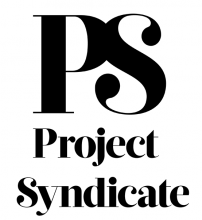You are here
How to reform IMF now
May 21,2015 - Last updated at May 21,2015
More than four years have passed since an overwhelming majority of the membership of the International Monetary Fund (IMF) agreed to a package of reforms that would double the organisation’s resources and reorganise its governing structure in favour of developing countries.
But adopting the reforms requires approval by the IMF’s member countries; and though the United States was among those that voted in favour of the measure, President Barack Obama has been unable to secure congressional approval.
The time has come to consider alternative methods for moving the reforms forward.
The delay by the US represents a huge setback for the IMF. It stands in the way of a restructuring of its decision-making process that would better reflect developing countries’ growing importance and dynamism.
Furthermore, with the reforms in limbo, the IMF has been forced to depend largely on loans from its members, rather than the permanent resources called for by the new measures. These loans, meant as a temporary bridge before the reforms entered into effect, need to be reaffirmed every six months.
In our view, the best way forward would be to decouple the part of the reforms that requires ratification by the US Congress from the rest of the package. Only one major element — the decision to move towards an all-elected executive board — requires an amendment to the IMF’s Articles of Agreement and thus congressional approval.
The other major element of the reform package is an increase and rebalancing of the quotas that determine each country’s voting power and financial obligation. This change would double the IMF’s resources and provide greater voting power to developing countries. Congress would still need to ratify the measure before the US’s own quota increased, but its approval would not be required for this part of the reform package to take effect for other countries.
The connection between the two parts of the reforms has always been unnecessary; the measures are independent, require different approval processes, and can be delivered separately.
Removing the link between them would require the support of the US administration, but not ratification by Congress. This separation could be implemented smoothly. A simple majority of the IMF’s executive board would recommend it to the board of governors, where a resolution separating the reforms into two parts would require 85 per cent of the votes.
In 2010, the reform package passed with more than 95 per cent of the votes. The changes to the quotas could then quickly become effective.
The quotas for each member country have already been agreed, so there would be no need for further complex and time-consuming negotiations. Countries that are willing and able to pay their quota increases would be allowed to do so, increasing the IMF’s resources and boosting their relative voting power.
The key obstacle to this proposal is the requirement of congressional approval to increase America’s quota share. This opens the possibility that the US’s voting power could temporarily fall below the 15 per cent threshold needed to veto decisions that require the support of 85 per cent of IMF members’ votes.
In order to secure US support, the board of governors could commit not to consider any draft decision requiring 85 per cent backing without America’s consent.
This guarantee could be included in the resolution dividing the reform package into two parts. It would remain valid until the US was in a position to increase its quota and recover its voting share.
The executive board could approve an analogous commitment and request the IMF’s managing director to refrain from submitting any draft decision requiring an 85 per cent majority without first obtaining US support.
The US administration might face criticism from Congress for accepting a measure that would temporarily cut the country’s voting share and for relying on a political agreement to preserve its veto power.
But the agreement could also act as an incentive for ratifying the reforms.
The power to reinstate the US’s formal veto power would lie entirely in the hands of Congress — making it unlikely that another four years would pass before the matter is finally resolved.
Paulo Nogueira Batista, Jr, is executive director of the IMF. Hector R. Torres is former alternate executive director of the IMF. ©Project Syndicate, 2015. www.project-syndicate.org

- Popular
- Rated
- Commented
Apr 08, 2025
Apr 09, 2025
Newsletter
Get top stories and blog posts emailed to you each day.











